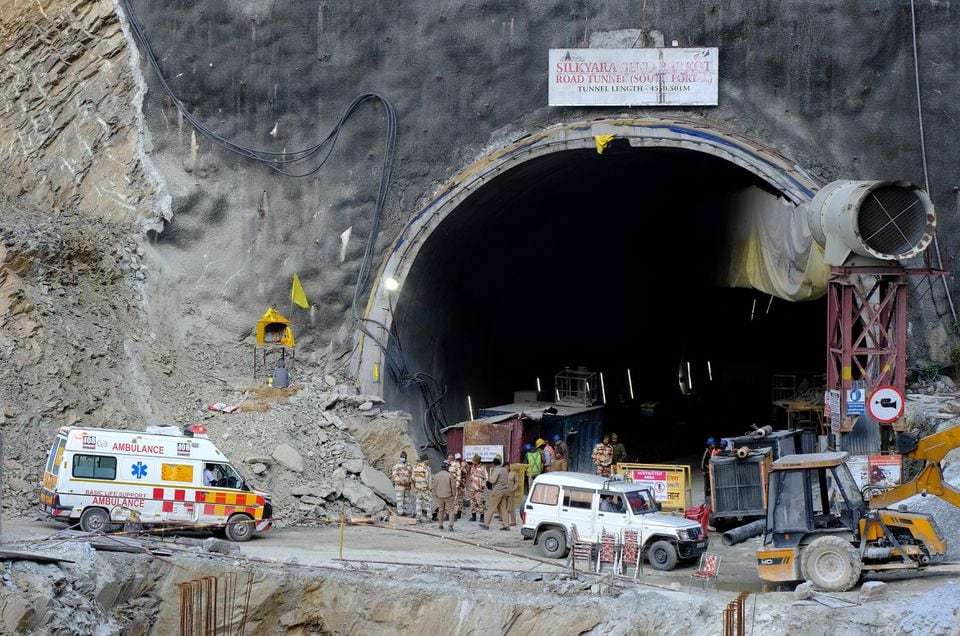Collapsed Indian tunnel had no safety exit, was built through geological fault


A tunnel which collapsed, trapping 41 workers in the Indian Himalayas this month, did not have an emergency exit and was built through a geological fault, a member of a panel of experts investigating the disaster said on Friday, reports Reuters.
Rescuers are still struggling to reach the construction workers 12 days after the 4.5-km (3-mile) tunnel caved in. The men, from some of India's poorest states, have been getting food, water and medicine through a pipe.
In the days that followed, the government asked a group of experts to investigate what went wrong, look into the construction of the tunnel in Uttarakhand state, and make recommendations for the future.
Preliminary findings indicated the collapse may have been caused by a geological fault, known as a "shear zone", a member of the panel told Reuters, speaking on condition of anonymity as he is not authorised to talk to the media.
There was also no escape passage, despite government guidelines recommending emergency exits for tunnels longer than 1.5 km, he added.
"Once the rescue operations are over, we will conduct detailed investigations to find out loopholes in the construction," the panel member said.
He declined to comment further before the full investigations were completed.
The tunnel was being built by the state-run National Highways and Infrastructure Development Corporation which is under India's Ministry of Road Transport and Highways. A ministry spokesperson, who speaks on behalf of the company, did not respond to a request for comment.
The government said on Wednesday it had ordered the National Highways Authority of India (NHAI) to audit 29 tunnels being constructed across India.
"Himalayan geology is not as predictable as we generally think," NHAI member Vishal Chauhan told reporters when asked on Friday if the government could have been better prepared for such an emergency.
"There are multiple obstacles and we are using the best technology to find solutions," he added.
'A SERIES OF LAPSES'
The tunnel was being built as part of the ambitious, $1.5 billion Char Dham project, designed to connect four important Hindu pilgrimage sites in north India through 890km of two-lane road.
It is one of the most ambitious infrastructure projects of Prime Minister Narendra Modi's government.
The government had said it employed environmentally friendly techniques in the design of the whole project to make geologically unstable stretches safer.
But the project has faced criticism from environmental experts and some work was halted after hundreds of houses were damaged by subsidence along the routes.
The impact of the whole project was not properly assessed before construction started, a report by a Supreme Court-appointed expert committee said in July 2020.
"The panel will have to investigate not only steps taken for disaster management, but also whether proper precautions were taken during the blasting, besides construction and design of the tunnel," said Hemant Dhyani, an environmentalist, referring to the panel formed to probe the collapse.
Dhyani, who was a member of the Supreme Court-appointed committee, told Reuters that his committee's recommendation of "building a narrow tunnel of 7-8 metres width has been ignored, leading to more blasting and increased risk of collapse".
"There are a series of lapses," he said, adding that more than 200 likely landslide locations have been created due to hill excavations, dumping of debris and choking of water flow during the whole project.
"We hope better sense prevails and the government will take corrective measures," he said.


 For all latest news, follow The Financial Express Google News channel.
For all latest news, follow The Financial Express Google News channel.